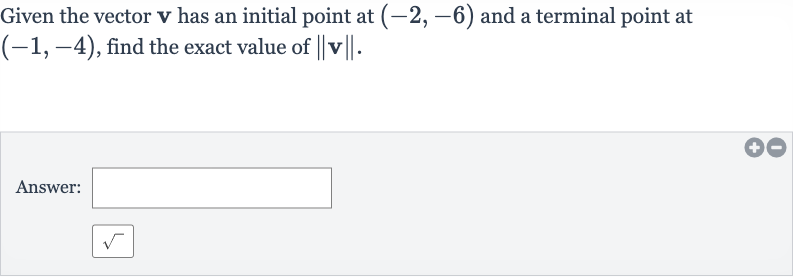AI tutor
Welcome to Bytelearn!
Let’s check out your problem:

Given the vector has an initial point at and a terminal point at , find the exact value of .Answer:
Full solution
Q. Given the vector has an initial point at and a terminal point at , find the exact value of .Answer:
- Calculate Differences: To find the magnitude of vector , we need to calculate the difference in the -coordinates and the difference in the -coordinates between the terminal point and the initial point. The magnitude of vector , denoted as , is the square root of the sum of the squares of these differences.Let's calculate the differences:
- Use Pythagorean Theorem: Now, we use the Pythagorean theorem to find the magnitude of vector :
Substitute and with the values we found:
More problems from Transformations of absolute value functions: translations and reflections
QuestionGet tutor help
QuestionGet tutor help
QuestionGet tutor help
QuestionGet tutor help
QuestionGet tutor help
QuestionGet tutor help
QuestionGet tutor help
QuestionGet tutor help
QuestionGet tutor help


